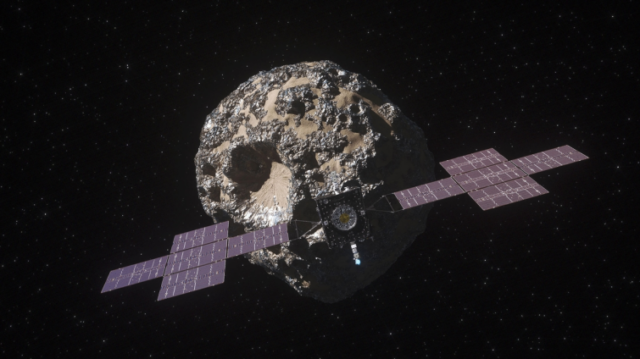
A pristine asteroid sample, believed to be a time capsule from the early days of our solar system, has been unveiled by NASA. This significant discovery could shed light on the origins of life on Earth and the evolution of our solar system.
Key Highlights:
- The sample contains water and a significant amount of carbon.
- The sample is nearly 5% carbon by weight, surpassing the initial goal of 60 grams.
- This is the largest carbon-rich asteroid sample ever returned to Earth.
- Initial analysis shows the presence of hydrated clay minerals and carbon in various forms.
- The sample could provide insights into how water was incorporated into solid materials, making Earth habitable.
A Time Capsule from Space:
The sample, extracted from the 4.5 billion-year-old near-Earth asteroid Bennu, was collected by NASA’s OSIRIS-REx mission in October 2020. It made its journey back to Earth, landing in the Utah desert in a capsule on September 24. Since its arrival, scientists have been meticulously analyzing the material, which turned out to be more abundant than anticipated.
NASA Administrator Bill Nelson highlighted the significance of the discovery, stating that the carbon and water molecules found are crucial elements in the formation of our planet. These findings could help scientists determine the origin of elements that might have led to life.
Delving into the Details:
The initial analysis of the sample was shared during a live NASA broadcast from the Johnson Space Center in Houston. The sample revealed a scientific treasure trove of carbon and water content. OSIRIS-REx principal investigator, Dante Lauretta, emphasized the importance of the discovery, noting the presence of abundant water in the form of hydrated clay minerals and carbon in both mineral and organic forms.
The analysis also unveiled sulfide minerals, essential for planetary evolution and biology, and iron oxide minerals that react to magnetic fields. These findings could be pivotal in understanding organic evolution.
A Journey of Discovery:
The OSIRIS-REx spacecraft’s approach to Bennu three years ago was a monumental step in this journey. The spacecraft used a touch-and-go sample acquisition mechanism to collect the sample, which could reveal the history of the asteroid’s formation and evolution. This knowledge could also aid NASA in devising strategies to deflect asteroids that pose a threat to Earth.
The anticipation surrounding this reveal has been building for years, with the OSIRIS-REx mission’s launch in 2016 marking the beginning of this exciting journey. For some, like Dante Lauretta, who was involved in the mission’s early stages, the wait has been almost two decades.
Looking Ahead:
The sample will undergo rigorous analysis over the next two years at a dedicated clean room inside the Johnson Space Center. Furthermore, portions of the sample will be distributed to laboratories worldwide, fostering global collaboration in this groundbreaking research.
Summary:
NASA’s unveiling of the asteroid sample from Bennu offers a unique glimpse into the early days of our solar system. Rich in carbon and water, this sample could be the key to understanding the building blocks of life on Earth and the evolution of our planet. As scientists worldwide delve into its secrets, the sample promises to unlock mysteries that have remained hidden for billions of years.











